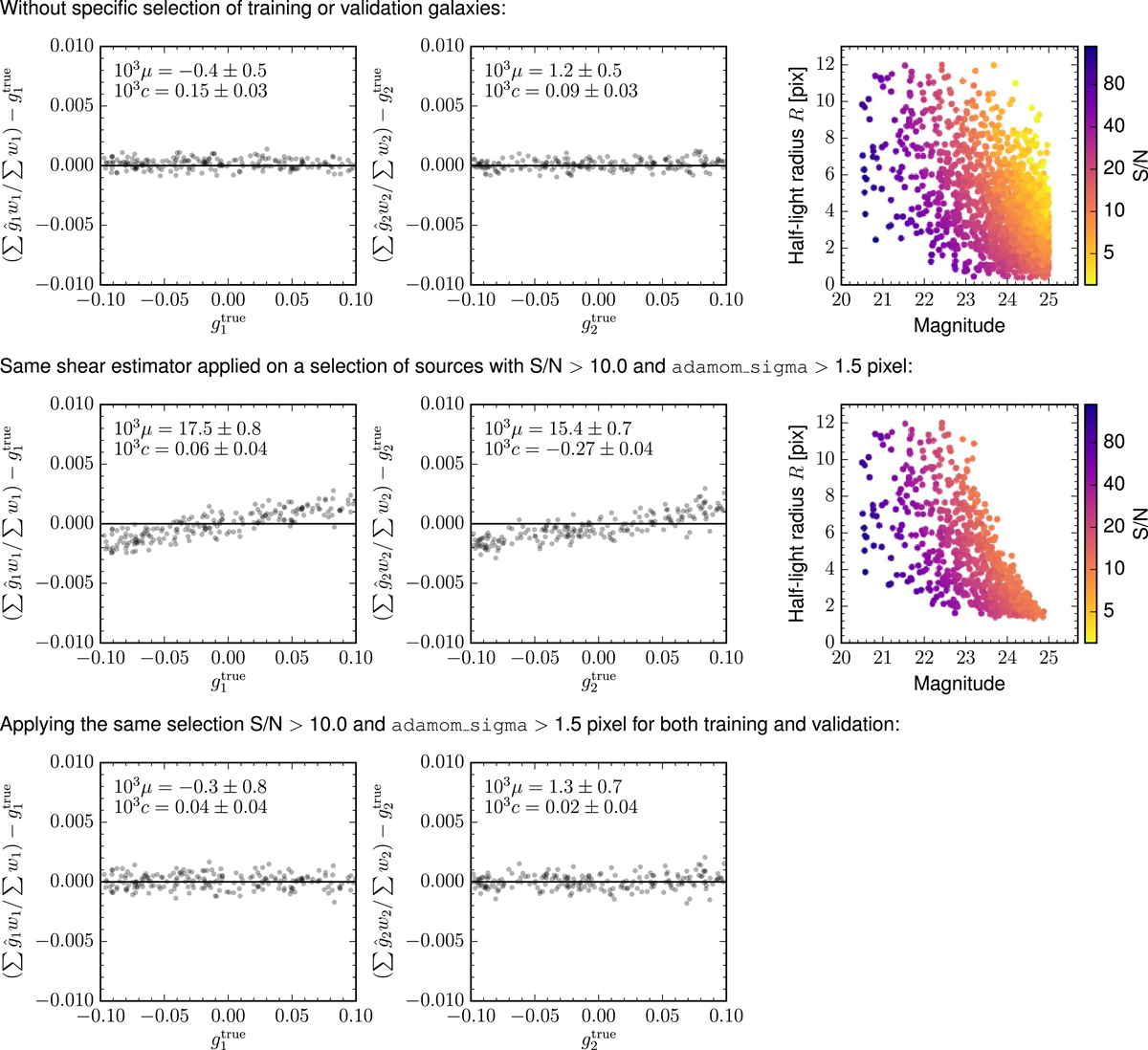Fig. 20.

Illustration of the effect of a simple yet realistic selection S/N > 10 and adamom_sigma > 1.5 pixel on the shear bias obtained on Euclid-like simulations, and how the algorithm is trained to compensate for it. Top row: average shear estimation residuals on the validation dataset VO (200 cases with 400 000 galaxies per case) with weights trained on TW, without specific selections based on observables, except for the success of the feature-measurement algorithm. Right-hand panel: measured S/N versus the true size and magnitude for a small random subset of galaxies from the validation set. Middle row of panels: results from the same estimators, but with the selection function applied to the validation set, resulting in percent-level multiplicative biases μi. For the bottom panels, the selection function has been applied both to the training set for the weights, and to the validation set. The point estimators remain unchanged. Only their weighting compensates for the selection, resulting in vanishing multiplicative and additive biases.
Current usage metrics show cumulative count of Article Views (full-text article views including HTML views, PDF and ePub downloads, according to the available data) and Abstracts Views on Vision4Press platform.
Data correspond to usage on the plateform after 2015. The current usage metrics is available 48-96 hours after online publication and is updated daily on week days.
Initial download of the metrics may take a while.


